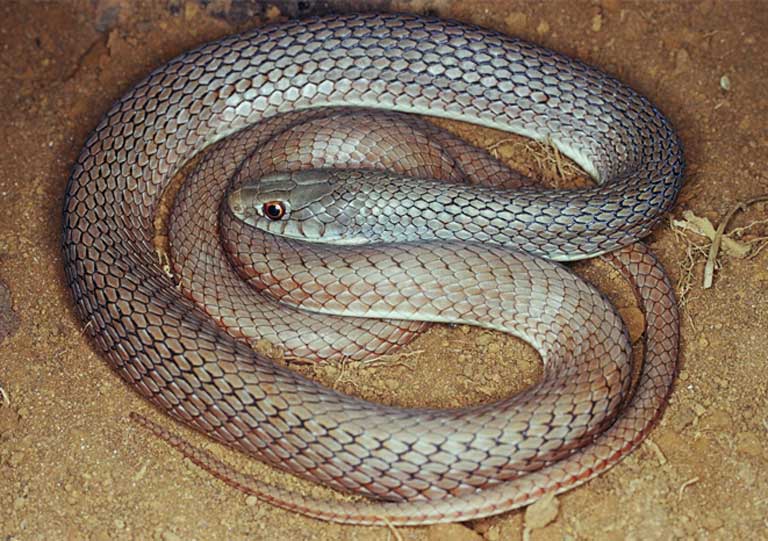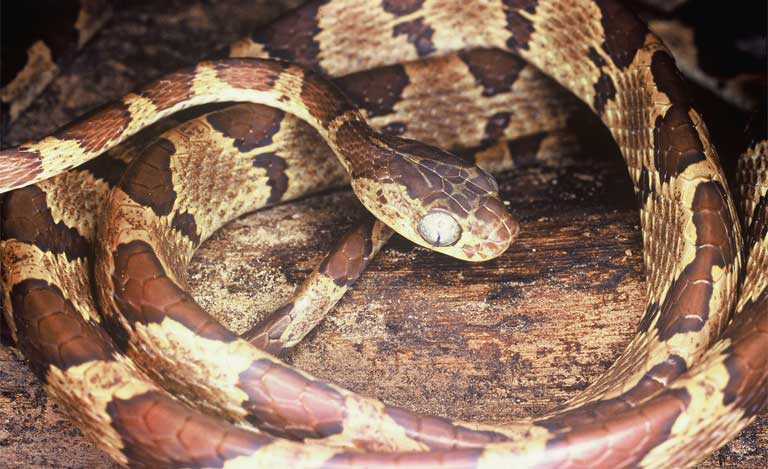Environment & Energy
Related: About this forumBrazil's Savannah, A Startlingly Diverse Reptile Habitat, Crumbles Before Farms, Ranches, Fire
EDIT
The Cerrado is among the world’s most diverse savannas, covering two million square kilometers (772,204 square miles), nearly a quarter of Brazil and half the size of Europe. But a mere 20 years ago, little was known about its wildlife beyond the most common or iconic species. Very few zoologists had ever even been there, and those who had, focused primarily on gallery forests, ignoring the savanna that makes up 61% of the biome.
Nogueira persisted in his quest. He convinced his professors and obtained Ministry of Environment maps that identified unstudied areas — and that’s where he went. Part herpetologist, part explorer, he spent four years traveling through a savanna matrix of grasslands, palm-covered riverscapes, low forests and dry plateaus in search of reptiles. He was among a handful of scientists that identified 57 new Cerrado reptile species from 1998 to 2008. So far, about 208 snake species, some 80 lizards, 40 worm lizards, seven turtles and four crocodiles have been logged onto the region’s constantly expanding official species lists. The sheer numbers of Cerrado lizard and snake species catalogued rivals that of the much better protected Amazon, said Guarino Rinaldi Colli, a herpetologist at the University of Brasilia.

Philodryas livida: A very rare and threatened snake. This particular specimen is one of the last known records of live specimens, all recorded in Emas National Park, from the early 2000s. Its typical habitat, open, tabletop grasslands, is quickly vanishing due to the expansion of mechanized agriculture. Image by Cristiano Nogueira.

Xenodon nattereri: This Neotropical hognose snake is endemic to the Cerrado, and relatively rare in collections. It is found in open savannas and grasslands, where it feeds mostly on lizard eggs. It apparently scoops the eggs from shallow burrows using its upturned snout and protruding rostral scale. Image by Cristiano Nogueira.

This vine snake (Imantodes cenchoa) is only found in gallery forests or their vicinities in the Cerrado. Although most of the species are typical of open savannas, gallery forest denizens are also an important component of Cerrado faunal diversity. Image by Cristiano Nogueira.
EDIT
Over the past 40 years, about half of this vast, highly threatened landscape has been cleared for large-scale, mechanized agribusiness. The flat and rolling grasslands rapidly gave way to cash crops mostly for export, including soy, sugarcane, corn, cotton and eucalyptus. Huge areas of native vegetation were also converted to pasture. As of 2015, an estimated 135 million beef cattle grazed some 400,000 square kilometers (154,000 square miles) of savanna. It was far easier and cheaper to develop than the rainforest. At first, very few cared about the loss of native vegetation. The grasslands lacked the towering trees and charismatic fauna that attracted conservationists to the Amazon. The biome is now a disconnected landscape, diced into fragmented habitat patches, with most of the agricultural growth in the south, but with plantations and ranches steadily marching northward.
EDIT
For half the year, the region can be as arid as a desert and vegetation regularly ignites. But Cerrado plants and animals have adapted to survive fire, having lived with its impacts for millennia. Massive underground root systems keep charred grasses alive. Some animals and birds are able to escape; others, including many reptiles, bunker in holes or burrows. One anole species, when reemerging from its refuge into a burned-over area, uses camouflage to hide from owls and other predators: its brown and mottled black coloring mimics a charred leaf. But now, the natural order has been disturbed. Fires burn too frequently, too hot, or at the wrong time of year, placing these well-adapted plants and animals in peril. In its undisturbed state before European settlement, localized Cerrado patches burned maybe every few years, or once per decade. Now some areas burn every year, or during the wrong season. “It’s a matter of timing and scale,” said Nogueira. Scientists are rushing to understand the new fire regime and its effects on wildlife.
EDIT
https://news.mongabay.com/2021/02/race-against-time-saving-the-snakes-and-lizards-of-brazils-cerrado/
Ziggysmom
(3,406 posts)Is it worth it? It takes on average 1800 gallons of water to produce a pound of beef.
Cool article from Business Insider, “ We are killing the environment one hamburger at a time”
https://www.businessinsider.com/one-hamburger-environment-resources-2015-2